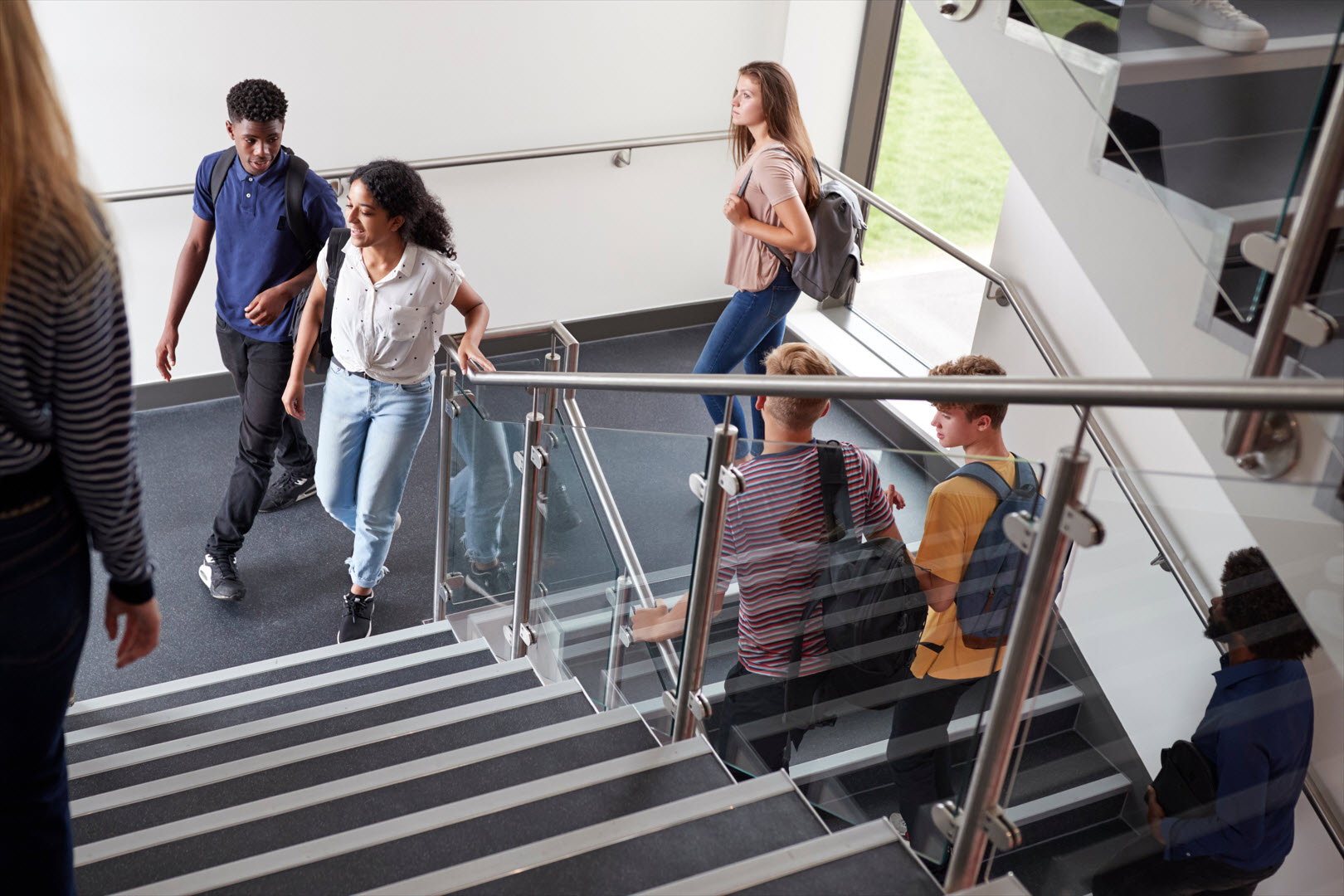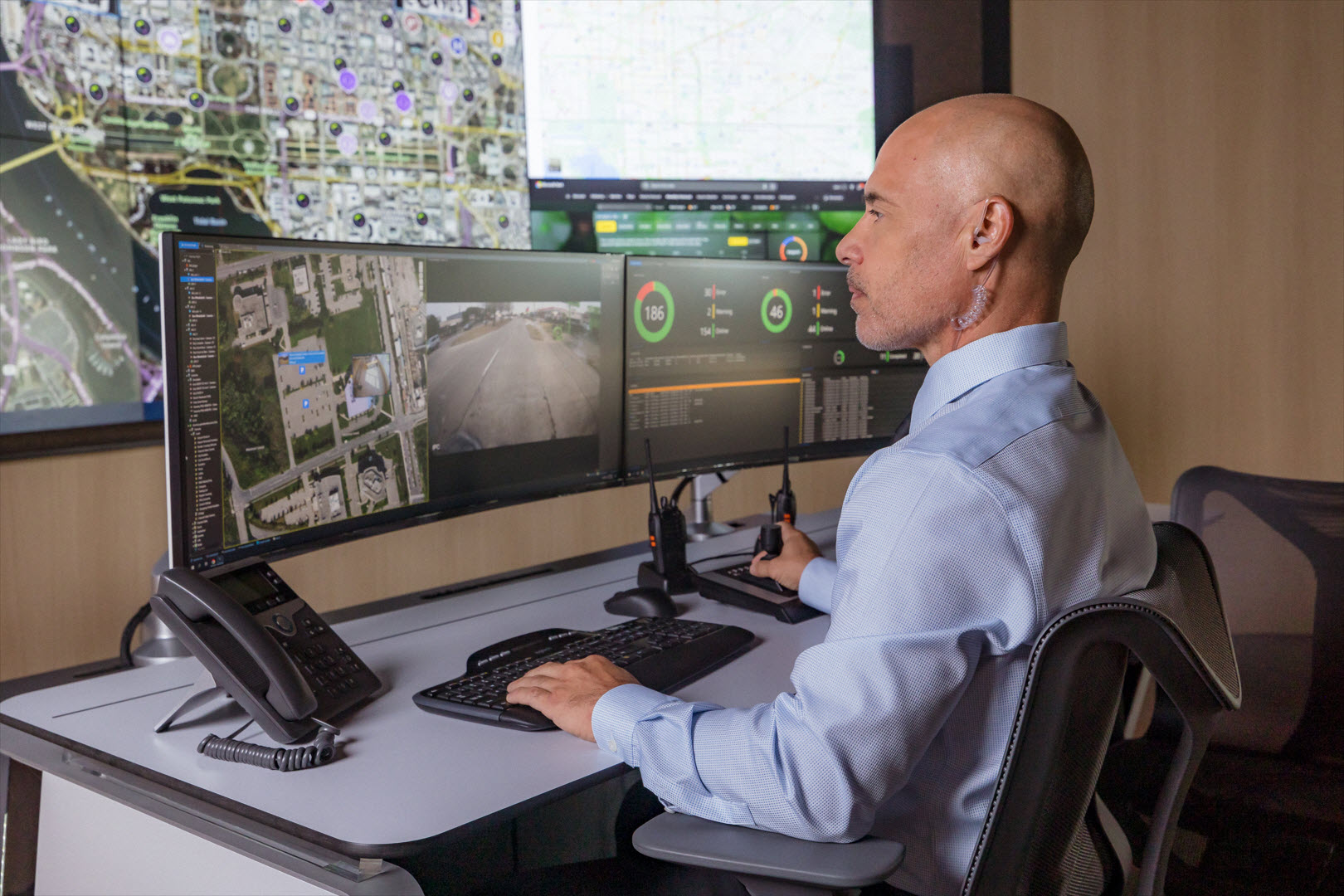Modern school security starts with the right foundation
Strengthen school safety with unified video surveillance and access control

Keeping K-12 schools secure is a complex job. With limited staff, aging infrastructure, and rising threats, even the most diligent teams can struggle to stay ahead. That’s why more districts are rethinking how they approach physical security—not just by adding more tools, but by bringing systems together.
It starts with a mindset shift:
-
Are your security teams working with connected, modern tools?
-
Are they set up to prevent incidents, not just react to them?
Let’s explore how unified systems—like video surveillance, access control, and analytics—can make school safety stronger, smarter, and more proactive.
GUIDE
Where most school security efforts get stuck
Even the best-intentioned plans hit roadblocks. Here are four common challenges holding schools back:
-
No on-site security: 60% of K-12 schools in North America don’t have security staff present.
-
Understaffed IT teams: Delays in updates and maintenance leave systems vulnerable.
-
Aging infrastructure: Makes it hard to deploy modern solutions at scale.
-
Disconnected technology: Legacy tools can’t communicate, creating blind spots.
"The first month we deployed Genetec™, a student went missing. Video lets us reconstruct every hour of her day and locate her quickly."
– Melissa Tebbenkamp, Director of Instructional Technology, Raytown Quality Schools
These challenges aren’t just operational—they’re deeply human. Every delay, every gap, every outdated camera puts real people at risk. That’s why unified security is more than an IT upgrade. It’s a shift in how schools protect their communities.
See what’s happening, everywhere, in real time
A modern video management system gives you visibility beyond what cameras alone can offer. With continuous, high-quality footage and intelligent analytics, your team can:
-
Monitor high-risk zones more effectively
-
Detect camera tampering or equipment failure quickly
-
Cut investigation times from hours to minutes
And while your staff manages day-to-day tasks, video analytics work in the background. It triggers alerts for busy areas, suspicious movement, and unauthorized access.

Balance safety and privacy
Keeping students safe means having the right information when it matters. But your security system is constantly collecting student data. So, how do you get the footage you need without compromising student privacy?
An advanced analytics tool can help. It blurs faces automatically, so students can’t be identified in security footage. Video is redacted automatically, helping to keep student identities out of view. This functionality can also help you comply with privacy regulations like the Family Educational Rights and Privacy Act (FERPA).
By combining the right tools with clear policies, schools can stay focused on safety without risking student privacy.
Act faster with real-time decision support
When school systems are connected, your response becomes faster and more coordinated.

Imagine this:
-
A mobile app triggers a geo-located alert from the school yard
-
Video footage confirms the activity and shares it with the right staff
-
An automated protocol is activated—lock doors, send announcements, alert first responders
That’s not hypothetical. That’s what happens when your video, access control, intercoms, and alerts work as one.
Control who comes and goes
Unified access control helps you manage entry points with precision:
-
Automate lockdowns based on time, threat level, or sensor input
-
Get alerts when doors are forced open or left ajar
-
Link doors to cameras so you can see who’s coming and going
You’ll reduce the risk of unauthorized entry and respond faster when protocols need to change.
Flexibility for your school’s reality
Not every school has the same resources or the same infrastructure. That’s why cloud-based and hybrid security deployments are becoming more common.
With an open, flexible system, you can:
-
Lower your hardware and maintenance burden
-
Get updates automatically—no manual installs
-
Secure footage off-site for extra peace of mind
-
Scale your system over time, without vendor lock-in
It’s a future-ready model built for the unique needs of schools.
Build a culture of prevention
A holistic security solution goes beyond your local context. Prevention has global implications. Your school can set new standards for safety by:
✓ Unifying cameras, access control, and intrusion detection
✓ Staying connected with a centralized, mobile-friendly solution
✓ Adapting to an evolving security landscape and new technology
Let’s make safer schools, together
When you choose Genetec, you're not just choosing technology—you’re choosing a partner that works with you to create safer learning environments.
Let’s protect what matters most: the safety of students, staff, and the broader school community.
